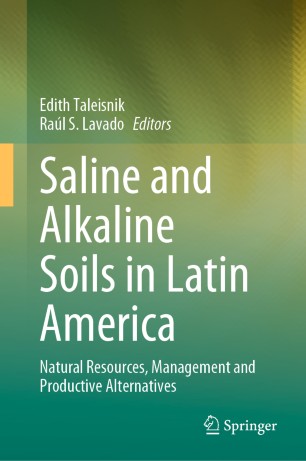View Item
- xmlui.general.dspace_homeCentros e Institutos de InvestigaciónCIAP. Centro de Investigaciones AgropecuariasInstituto de Fisiología y Recursos Genéticos VegetalesPartes de librosxmlui.ArtifactBrowser.ItemViewer.trail
- DSpace Home
- Centros e Institutos de Investigación
- CIAP. Centro de Investigaciones Agropecuarias
- Instituto de Fisiología y Recursos Genéticos Vegetales
- Partes de libros
- View Item
Plant Tolerance Mechanisms to Soil Salinity Contribute to the Expansion of Agriculture and Livestock Production in Argentina
Abstract
This chapter addresses salt tolerance mechanisms in crops and woody species cultivated in Argentina, highlighting the contribution of local research to these topics. Work on forages and woody species represents approximately half of this research that has been published by Argentine authors in international journals. Basic research on plant salinity mounts to only 12% of the total, indicating that it still does not attract sufficient consideration among
[ver mas...]
This chapter addresses salt tolerance mechanisms in crops and woody species cultivated in Argentina, highlighting the contribution of local research to these topics. Work on forages and woody species represents approximately half of this research that has been published by Argentine authors in international journals. Basic research on plant salinity mounts to only 12% of the total, indicating that it still does not attract sufficient consideration among researchers. Among forage plants, attention in this chapter is focused on Rhodes grass (Chloris gayana Kunth), while in woody perennials, salt tolerance mechanisms in Prosopis, which have been extensively investigated locally, are reported. Despite the importance of soybean in Argentine economy, as well as that of other crops such as maize, wheat, sunflower, relatively little research attention has been paid to salinity issues in these major field crops. This situation may reflect the fact that they are mostly cultivated in non-saline soils.
[Cerrar]

Author
Editor - Compilador
Taleisnik, Edith (Editor);
Lavado, Raúl S. (Editor);
Fuente
Saline and Alkaline Soils in Latin America/ editors: Taleisnik E., Lavado R.S. Springer, Cham, 2021. p. 381-397
Date
2021
Editorial
Springer
ISBN
978-3-030-52591-0
978-3-030-52592-7 (online)
978-3-030-52592-7 (online)
Formato
pdf
Tipo de documento
parte de libro
Palabras Claves
Derechos de acceso
Restringido
 Excepto donde se diga explicitamente, este item se publica bajo la siguiente descripción: Creative Commons Attribution-NonCommercial-ShareAlike 2.5 Unported (CC BY-NC-SA 2.5)
Excepto donde se diga explicitamente, este item se publica bajo la siguiente descripción: Creative Commons Attribution-NonCommercial-ShareAlike 2.5 Unported (CC BY-NC-SA 2.5)

